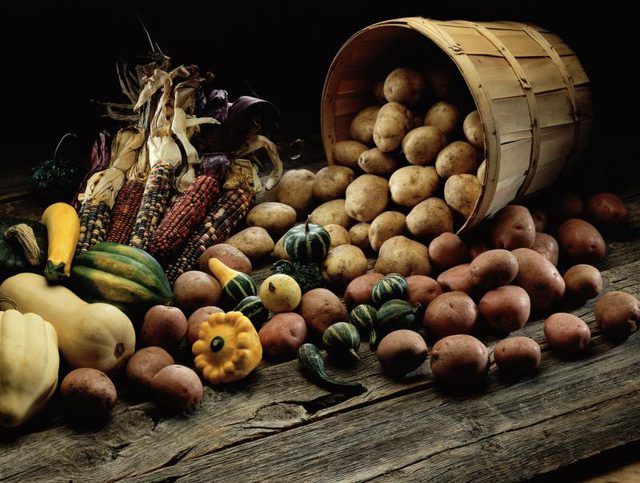Bulbs
Flower Basics
Flower Beds & Specialty Gardens
Flower Garden
Garden Furniture
Garden Gnomes
Garden Seeds
Garden Sheds
Garden Statues
Garden Tools & Supplies
Gardening Basics
Green & Organic
Groundcovers & Vines
Growing Annuals
Growing Basil
Growing Beans
Growing Berries
Growing Blueberries
Growing Cactus
Growing Corn
Growing Cotton
Growing Edibles
Growing Flowers
Growing Garlic
Growing Grapes
Growing Grass
Growing Herbs
Growing Jasmine
Growing Mint
Growing Mushrooms
Orchids
Growing Peanuts
Growing Perennials
Growing Plants
Growing Rosemary
Growing Roses
Growing Strawberries
Growing Sunflowers
Growing Thyme
Growing Tomatoes
Growing Tulips
Growing Vegetables
Herb Basics
Herb Garden
Indoor Growing
Landscaping Basics
Landscaping Patios
Landscaping Plants
Landscaping Shrubs
Landscaping Trees
Landscaping Walks & Pathways
Lawn Basics
Lawn Maintenance
Lawn Mowers
Lawn Ornaments
Lawn Planting
Lawn Tools
Outdoor Growing
Overall Landscape Planning
Pests, Weeds & Problems
Plant Basics
Rock Garden
Rose Garden
Shrubs
Soil
Specialty Gardens
Trees
Vegetable Garden
Yard Maintenance
How to Grow Potatoes in a Bucket
How to Grow Potatoes in a Bucket. Potatoes (Solanum tuberosum) do well as an annual food crop in Department of Agriculture plant hardiness zones 1 through 7. While they are commonly grown in-ground by home gardeners, they can be easily and successfully grown in containers. Container-grown potatoes can be grown year-round, since they can be moved...

Potatoes (Solanum tuberosum) do well as an annual food crop in Department of Agriculture plant hardiness zones 1 through 7. While they are commonly grown in-ground by home gardeners, they can be easily and successfully grown in containers. Container-grown potatoes can be grown year-round, since they can be moved indoors so long as light requirements are met. To successfully grow potatoes in a bucket, choose your potato variety carefully. You also need to meet the growing requirements for potatoes.
Container Requirements
The most important requirement for your bucket is that it be made of material suitable for growing food. Food-safe plastic or garden-safe wood are the ideal materials for your bucket. Avoid metal as it can corrode over time and affect soil nutrition. Your bucket must also have good drainage, as sodden soil is extremely harmful to plants. Drill drainage holes in your bucket if it does not already have them. The size of your container is also important. Potatoes do well in large containers, so plan on 2 1/2 gallons of growing space per potato plant. Ensure that the container is at least 1 foot deep.
Preparing the Soil and Growing Conditions
Potatoes enjoy sandy, acidic soil that is nutrient-rich. Use a mix of compost and nutrient-rich potting or garden soil to fill your container. Place a layer of gravel or broken pieces of Styrofoam at the bottom of your bucket. This will help your container garden drain better. Fill your bucket almost to the top -- 1 inch below the rim -- with the compost and soil mix. Potato plants enjoy full sun and moist, but not sodden soil. Container gardens are more susceptible to dehydration during summer months. Keep your soil evenly moist, neither soaked nor dry to touch. Place a large dish under the bucket, keeping it filled with water. The plants and soil will absorb water as needed. This method also helps reduce the level of nutrients washed away during watering.
Planting Potatoes
To plant potatoes, you must start by chitting potatoes. This is especially important if you are planting potatoes in the late winter and early spring for a late spring harvest. Chit potatoes by laying your seed potatoes out in a cool, frost-free and sunny environment. Egg boxes or old seed trays work well. The eyes of the potatoes will produce shoots. Position these upward toward the sunlight for optimal results. When the shoots are 1 inch long, the seed potato can be planted. Prior to planting, evenly spread a small handful of a high-phosphorous fertilizer, such as bonemeal, 7 inches below the surface of the soil. Cover with 2 inches of soil and compost mixture. Then push a chitted seed potato below the surface of the dirt, with the shoots pointing upward. Push the chitted potato down no more than 5 inches deep, and cover with soil. The seed potato should not touch the fertilizer directly as it will burn the sensitive new shoots and roots of the plant.
Varieties and Spacing
Potatoes are categorized as earlies, second earlies and maincrop potatoes. Earlies are planted in the late winter and are harvested in early summer. Second earlies are planted in early spring and harvested midsummer. Maincrop potatoes are harvested in the fall, after an early spring planting. You can also plant potatoes in the late summer for a fall harvest. First and second early varieties work best for container potatoes. Salad potatoes, such as the "Charlotte" (Solanum tuberosum "Charlotte") and the "Lady Christi (Solanum tuberosum "Lady Christl), grow well in the restricted space of a container. But you can grow any size of white, red, yellow or russet potatoes successfully in containers, assuming there is enough space for the potato to mature. Unless you have a very large container, plant no more than three potato plants per container, spacing them evenly apart. The closer your plants are, the smaller your spuds will be.